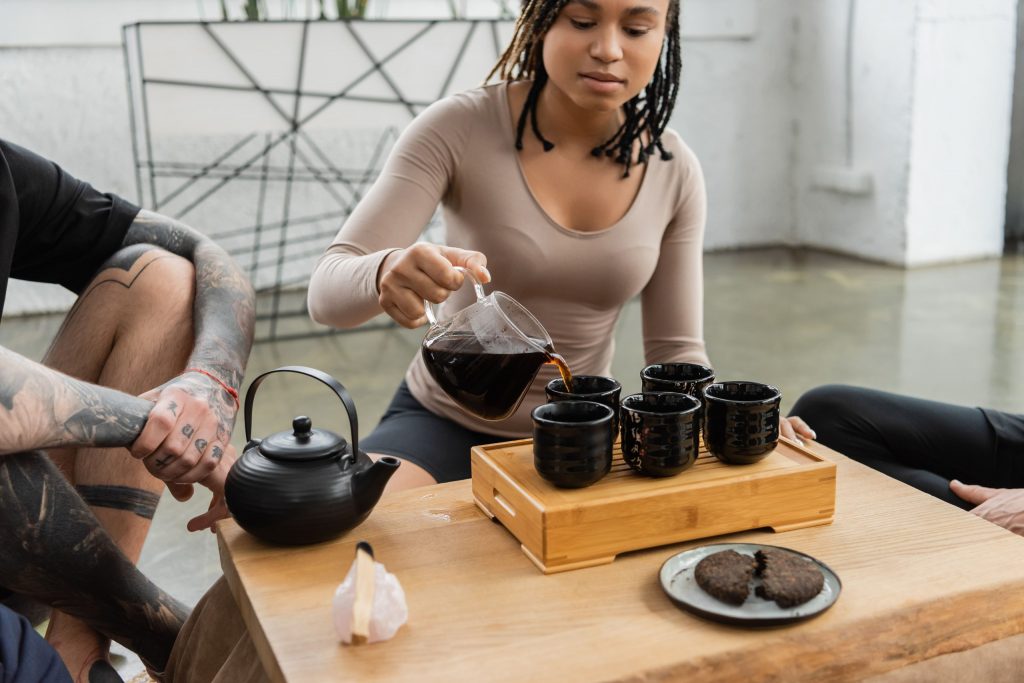At first glance, the Japanese tea ceremony—chanoyu—might appear simple: a host prepares matcha and serves it to a guest. But beneath this quiet exchange lies a deeply refined art form that has evolved over centuries. It is part meditation, part aesthetic experience, and part philosophical journey.
To participate in chanoyu is to step into another world—one where every movement is intentional, every silence is meaningful, and every detail, no matter how small, carries spiritual weight.
A Tradition Rooted in Zen
The Japanese tea ceremony has its origins in Zen Buddhism, introduced from China in the 12th century. Over time, it transformed under the influence of tea masters like Murata Jukō and Sen no Rikyū, who emphasized wabi-sabi—a Japanese aesthetic rooted in imperfection, simplicity, and transience.
Unlike grand Western banquets or hurried modern tea breaks, chanoyu invites humility. It’s not about impressing others, but about being fully present—with your guests, with the utensils, with the moment itself.
The Setting: A Space Apart
The tearoom (chashitsu) is often a small, rustic space, separate from the main house, sometimes reached by walking a quiet garden path. As guests enter, they symbolically leave the outside world behind—along with status, distractions, and worldly concerns.
Everything in the tearoom is chosen for the occasion:
- a scroll with a seasonal poem
- a single flower in a vase
- a hand-formed ceramic bowl
- the sound of boiling water in an iron kettle
Each item is placed with purpose, and nothing is excessive. The empty space speaks as much as the objects within it.
The Ceremony: A Choreography of Awareness
The host greets the guests with a bow, and the ritual begins. Every gesture—folding the cloth, wiping the bowl, scooping the tea—is carried out slowly and gracefully, like a quiet dance.
There is no rushing, no unnecessary speech. Silence is welcome. Even as tea is whisked and shared, the focus remains on attentiveness. In that moment, the world contracts into a single bowl of tea—and expands into something timeless.
The act of drinking becomes sacred, not because of the drink itself, but because of how it is offered.
Wabi, Sabi, and the Beauty of the Imperfect
At the heart of chanoyu is the appreciation of wabi and sabi. These concepts can be difficult to translate, but together they form a worldview:
- Wabi refers to simple, humble beauty—an old wooden shelf, a handmade cup, a quiet corner untouched by fashion.
- Sabi is the beauty of time’s passing—of things that age, weather, and carry the patina of life.
The tea ceremony teaches us to value these things. Not everything must be polished, perfect, or new. Sometimes, what is chipped, faded, or quiet holds the deepest meaning.
The Spiritual Side of Tea
Although chanoyu involves no preaching, it is steeped in spiritual practice. The tea master Sen no Rikyū defined the essence of the ceremony in four principles:
- Wa (harmony) — with others and with nature
- Kei (respect) — for people, tools, and the moment
- Sei (purity) — of space, intention, and heart
- Jaku (tranquility) — the state that follows when the first three are practiced
These are not just ideas for tea—they are ideals for life.
Why It Still Matters Today
In our hurried, hyper-connected world, the Japanese tea ceremony offers a counterpoint: slowness, simplicity, stillness. It teaches us to pause. To notice. To treat the ordinary as sacred.
You don’t need a tatami mat or bamboo ladle to bring this spirit into your own tea practice. Even a quiet five-minute pause with a bowl of matcha in your hands can be a kind of ceremony—if your mind is present and your heart is open.

